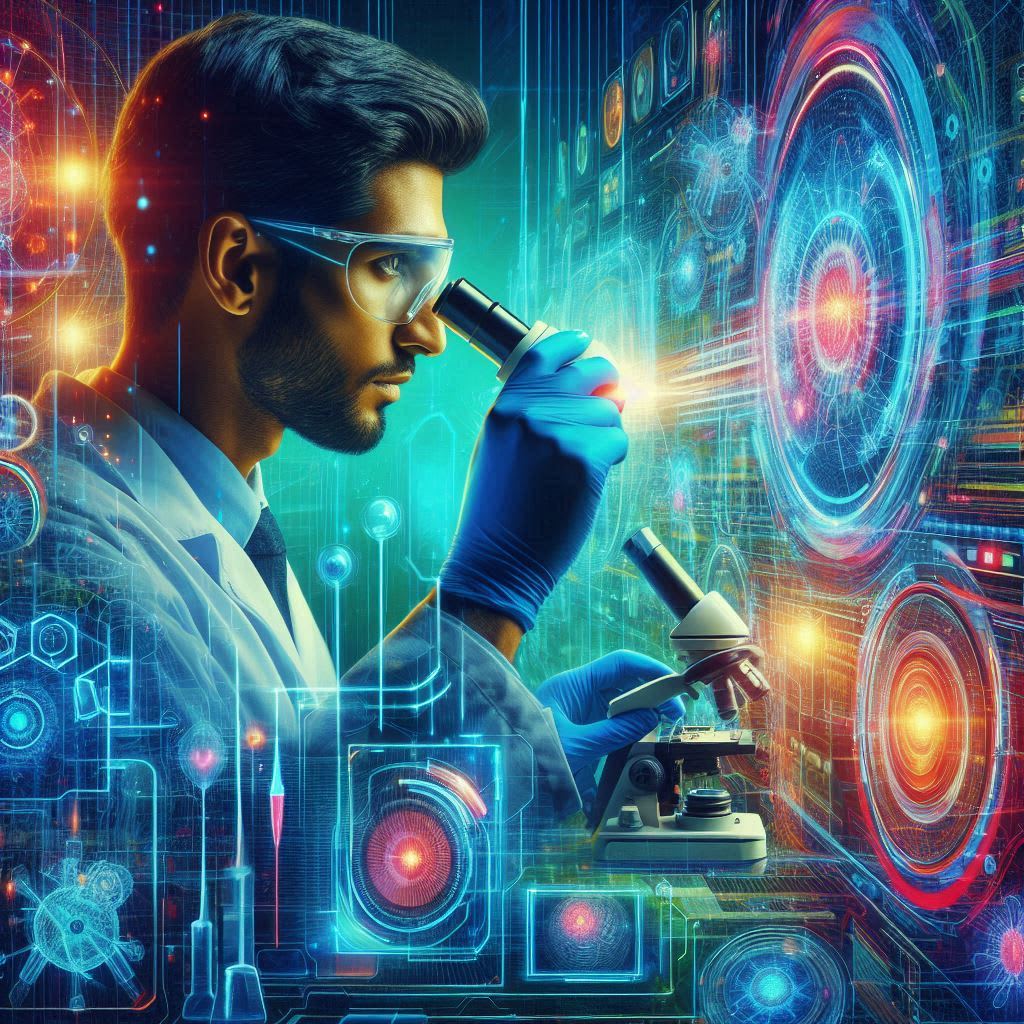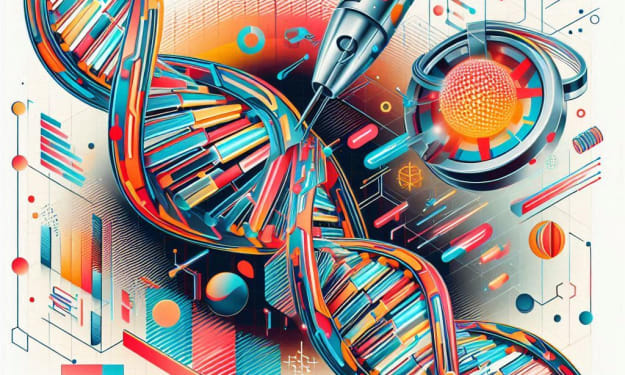Unveiling the Invisible: Breakthroughs in Sensing and Imaging Technology
Beyond the Senses: Unveiling a Hidden World

Unveiling the Invisible: Breakthroughs in Sensing and Imaging Technology
Imagine peering into the intricacies of a living cell, witnessing the birth of a star billions of light-years away, or detecting the faintest whisper of a gravitational wave. These were once the stuff of science fiction, but thanks to revolutionary advancements in sensing and imaging technology, such feats are becoming increasingly possible. This article delves into the exciting realm of this technology, exploring how it's pushing the boundaries of human perception and transforming our understanding of the world around us.
Beyond the Limits of Our Senses:
Our senses – sight, touch, smell, taste, and hearing – offer a limited window on the world. They can only detect a fraction of the electromagnetic spectrum, the vast tapestry of energy that permeates the universe. Similarly, our ability to perceive size and scale is confined to objects within our immediate environment. However, the world is far richer and more complex than what meets the eye. Sensing and imaging technologies bridge this gap, allowing us to explore realms beyond the reach of our natural senses.
Quantum and Optical Physics: Unveiling the Microscopic and the Cosmic:
At the forefront of this revolution lie the principles of quantum and optical physics. These fields explore the behavior of light and matter at the atomic and subatomic level. By manipulating light and exploiting the unique properties of quantum mechanics, scientists are creating sophisticated instruments that can detect and image objects with unparalleled precision.
A Glimpse into the Nanoscale:
One exciting application lies in the realm of nanotechnology. Here, sensing and imaging tools allow us to visualize and manipulate objects at the nanoscale – a billionth of a meter. These tools enable scientists to understand the fundamental properties of materials at this tiny level, paving the way for the development of revolutionary new materials with unique properties. For instance, researchers can use Atomic Force Microscopes (AFMs) to not only visualize the structure of nanoparticles but also measure their forces and interactions at the atomic level. This information is crucial for designing new materials with tailored properties for applications in drug delivery, where nanoparticles can be used to transport medication directly to diseased cells, or in solar energy harvesting, where specially engineered nanoparticles can improve the efficiency of solar panels.
Peering into the Deep Cosmos:
On the other hand, advancements in telescopes and astronomical imaging techniques have opened a window on the vastness of space. Telescopes like the Hubble Space Telescope and its successor, the James Webb Space Telescope (JWST), utilize cutting-edge infrared and optical sensors to capture breathtaking images of distant galaxies, nebulae, and black holes. These instruments allow astronomers to study the formation of stars and planets, trace the evolution of the universe, and potentially even detect signs of life on exoplanets – planets orbiting stars other than our Sun. The recent release of the first deep-field images from the JWST has captured the world's imagination, showcasing the universe in unprecedented detail and revealing never-before-seen galaxies dating back billions of years.
Beyond Imaging: Sensing the Invisible:
Sensing technologies extend beyond traditional imaging. From medical applications like Magnetic Resonance Imaging (MRI) scans, which reveal detailed structures within the human body, to LiDAR (Light Detection and Ranging) systems used in self-driving cars to create 3D maps of their surroundings, these technologies allow us to "sense" properties beyond what we can directly see. For instance, archaeologists utilize ground-penetrating radar (GPR) to locate buried ruins and artifacts without physically disturbing the ground. GPR works by sending electromagnetic waves into the ground and analyzing the reflected signals, allowing archaeologists to identify hidden structures and map ancient settlements.
The Ethical Considerations:
The power of these technologies comes with its own set of ethical considerations. Privacy concerns arise with the ability to peer into the human body or track individuals' movements with high precision. Additionally, the potential for military applications of advanced sensing technologies raises questions about responsible development and deployment. As these technologies continue to evolve, it's crucial to establish clear ethical guidelines and regulations to ensure their use for the benefit of humanity.
The Future of Sensing and Imaging:
The future of this field promises even more remarkable breakthroughs. Quantum computing, a new field utilizing the principles of quantum mechanics to perform computations impossible with traditional computers, holds immense potential for enhancing image processing and data analysis in sensing technologies. Additionally, researchers are exploring the use of artificial intelligence (AI) for automating data analysis and extracting insights from complex sensor data. For instance, AI algorithms are being developed to analyze medical scans and identify early signs of disease with greater accuracy than human doctors. These advancements will likely lead to a deeper understanding of the universe, revolutionize medical diagnostics, and usher in a new era of human-machine interaction, potentially leading to the development of brain-computer interfaces that allow direct communication between our brains and computers.
In Conclusion:
Sensing and imaging technologies are rapidly transforming our world. By pushing the boundaries of human perception, these tools are allowing us to explore the invisible world around us and unlock new frontiers in scientific discovery. As these technologies continue to evolve, we can expect even more groundbreaking discoveries and advancements that will shape the future of medicine, environmental monitoring, space exploration, and human-computer interaction. Imagine a future where doctors can diagnose diseases at the earliest stages thanks to AI-powered medical imaging, or where environmental scientists can monitor deforestation and pollution in real-time using advanced remote sensing techniques. The possibilities are truly endless, and the journey of discovery in the realm of sensing and imaging technology has only just begun.
About the Creator
suren arju
Hi there! I'm Suren, your startup guide. Entrepreneur, writer, dreamer - I share insights, tips & stories to fuel your startup journey. Ready to explore, learn & win together? Join me & let's redefine how we launch, learn & leap!
Enjoyed the story? Support the Creator.
Subscribe for free to receive all their stories in your feed. You could also pledge your support or give them a one-off tip, letting them know you appreciate their work.





Comments
There are no comments for this story
Be the first to respond and start the conversation.